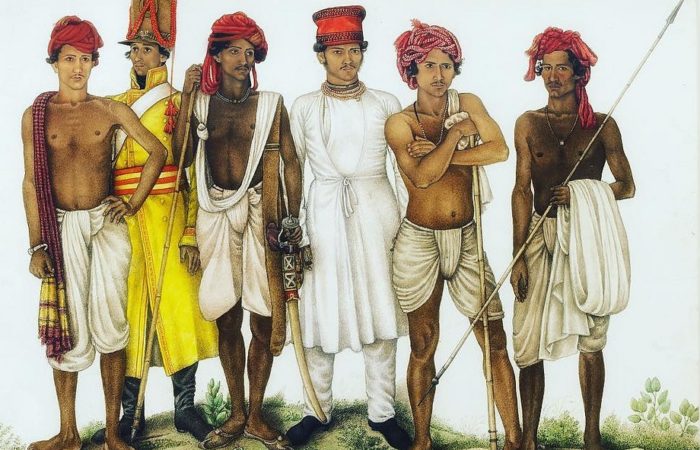
Янв 31
Indian staff
The North Indian staff — lakri (लकड़ी or لکڑی, meaning
«a wood») — is a powerful bamboo stave or stick. Its length varies
from 150 to 170 cm but ideally is selected individually so that the staff
reaches the height of the earlobe of the owner.
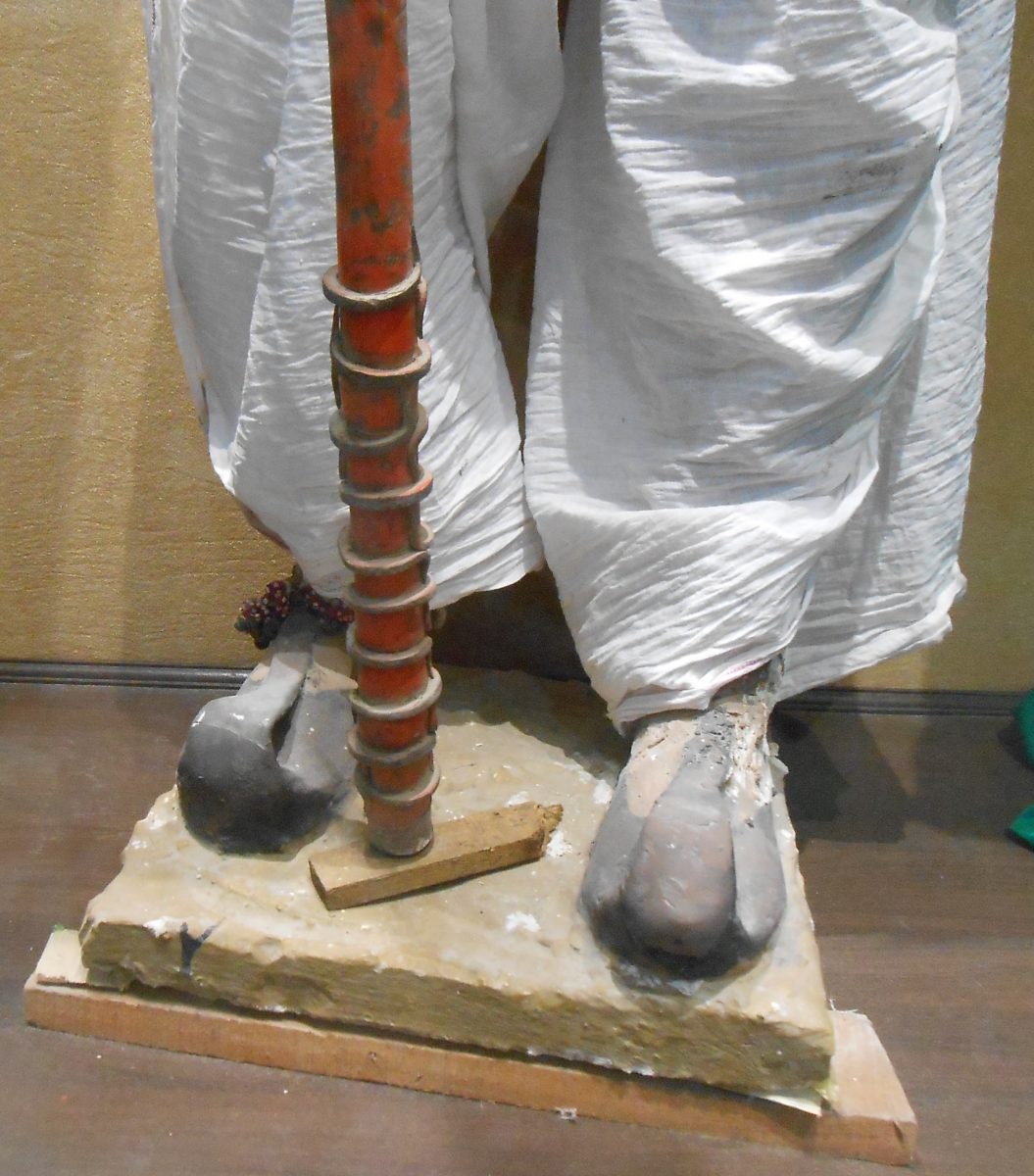
The staff is the main weapon in Indian martial arts and thus, the most
common weapon in the history of India. In most cases, it was a piece of bamboo
trunk, usually expanding to the bottom. Additionally, the lower part either was
ironed with metal or equipped with multiple rings worn on the trunk as washers.

Except for the main crowded highways, traveling along the roads of India without a staff was very dangerous. Up until the 20th century, a villager in India did not leave home without a staff, which was used as a weapon against robbers and predators. The lakri traces its origin to the shepherd’s staff, known to all pastoral tribes of the ancient Eurasian tradition.
According to the Vedic texts, the staff was used for both cattle control
and protection. The Indian proverb says: «the one wielding the staff owns
the cow». And here a very important point arises that determined the way
of using the staff and the appropriate techniques: who did the shepherds have to protect the cattle and themselves from first?
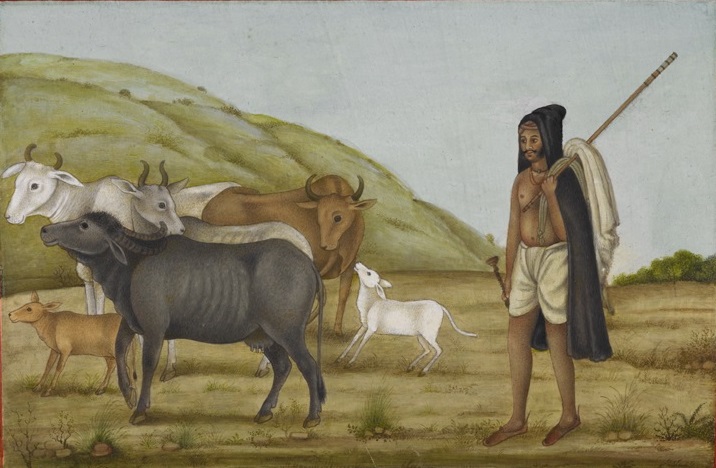
Analyzing the basic techniques of the Indian staff and the techniques not adapted to the duel of two man, it is difficult not to pay attention to the constant turns of 180-360 degrees, circular strikes, passing one into another, aimed at different, often opposite sides, and full control of the entire space around. If we try to imagine the reasons why such a technique could be brought to life, it is obvious that the challenge was the presence of the need to resist the attacking pack of predators.
The issue of protection from wild animals always was extremely hot for Indians. For example, in 1878, only in one territory of the modern state of Uttar Pradesh wolves killed 624 people. In 1900, 285 people were killed in what is now the state of Madhya Pradesh. Even in the 1980s, wolves killed up to 100 people a year in India. In 1996, the New York Times published a report from the state of Uttar Pradesh on the struggle of local residents against wolves, where peasants were armed with bamboo staffs and ancient guns. And this is about the 20th century. One can imagine a situation that took place in the plains and jungles of India 500, 1000 or 2000 years ago.
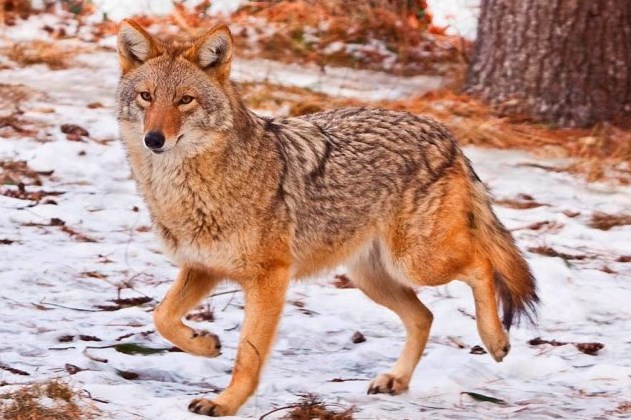
The Indian wolf, a smaller subspecies of the European grey wolf, is known for its attacks on humans. The red wolf — dhole, referring to the species Cuon alpinus, widely known through Rudyard Kipling, horrified as well:
… the dhole, the red hunting-dog of the Dekkan, was moving to kill, and the Pack knew well that even the tiger will surrender a new kill to the dhole. They drive straight through the Jungle, and what they meet they pull down and tear to pieces. Though they are not as big nor half as cunning as the wolf, they are very strong and very numerous.
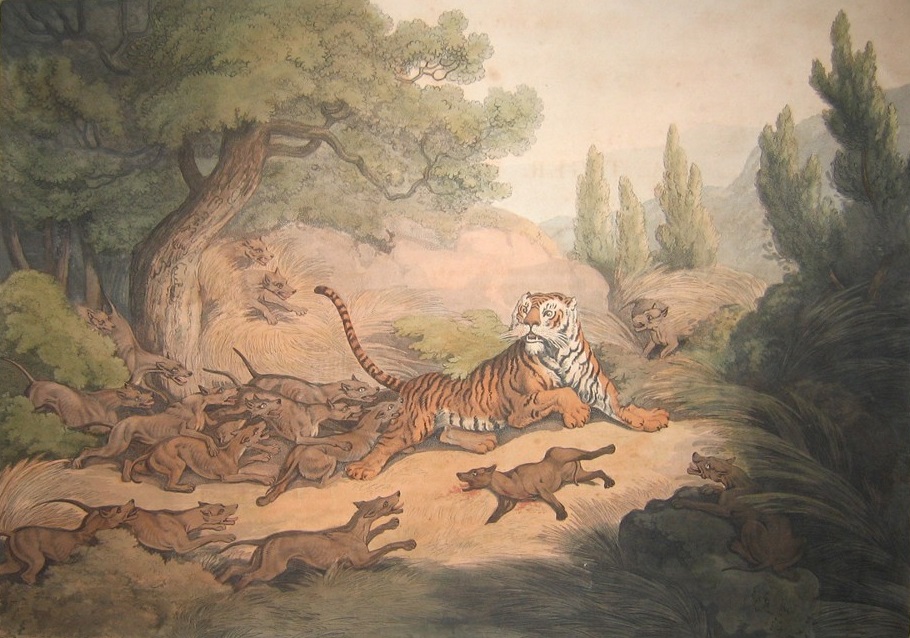
The red wolves attacked tigers, Asiatic black bears, snow leopards and very rarely humans, but they were a great danger to cattle. The wolves of this species were known in the Russian Far East:
Suddenly around the bend of the river, I saw some kind of animal, like a dog, but taller. Wide head, small hairy erect ears, blunt muzzle, tucked build and a long bushy tail showed him to be a red wolf or a jackal-like wild dog. The wolf’s color was not red. It was darker on back and lighter on the belly. The animal was lapping the water. When we came to the pebble, it stopped drinking and ran to the forest in big jumps. Two wolves jumped from the coastal bushes after him. One of them was the same color as the first one and the other was darker. A few more animals flashed past us in the bushes. I shot and wounded one of them. Then Dersu came. Having learned what was the matter, he went into the bushes and began to look for something. About two minutes later I heard his call and turned in that direction. Dersu stood near a large cedar and waved his hand to me. Coming to him, I saw a large bloodstain on the ground and scraps of deer hair in some places. Dersu told me that the red wolves always roam the taiga in packs and hunt goats together, some playing the role of beaters, and others ambush. When they rush on an animal, then take it apart, leaving, as in this case, only a bloody spot and scraps of wool. Hunters say that there were cases of their attacks on humans
Vladimir Arsenyev. «Dersu Uzala».
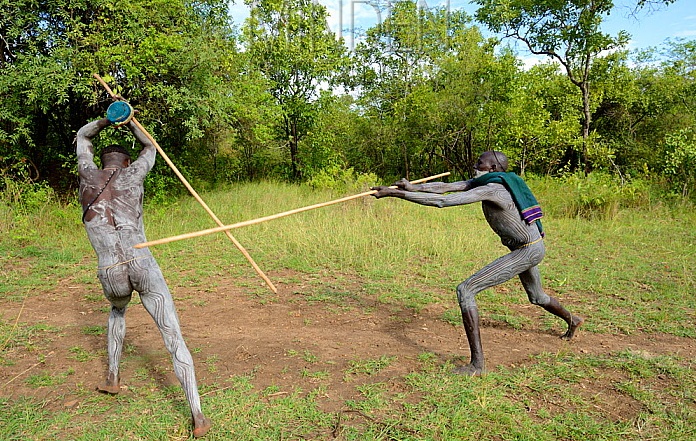
It is easy to distinguish techniques with a staff, dated back to the ancient
time of “heroic shepherd” with one feature, in contrast to the more recent
martial arts: the staff is held by both hands at one end.
This is how the pole is held by traditional pastoralists, the people of
Surma in Ethiopia, isolated due to natural factors and preserved their
traditional culture intact. Only such a hold allows you to safely protect from
an attacking animal. In other cases, when the staff is held by two
symmetrically placed hands, which allows the use of both its ends, then it is a
completely different origin of such practices.
These features of the Indian staff found their application on the
battlefield, especially in cases where military tactics did not involve compact
forming and a salvo, so any collision inevitably turned into a melee, when
danger could come from any side, as in the case of an attack of a wolf pack.
Abu-l Fazl Allami, the author of Akbar-nama, describing Indian troops of
Akbar, mentioned units «lakrayits» — warriors using staffs (the
latter must be distinguished from those present at the numerous images of
Indian painting «chobdhars» — insignia carriers in processions. In
this case, the richly decorated maces and staffs played an exclusively
ceremonial role).
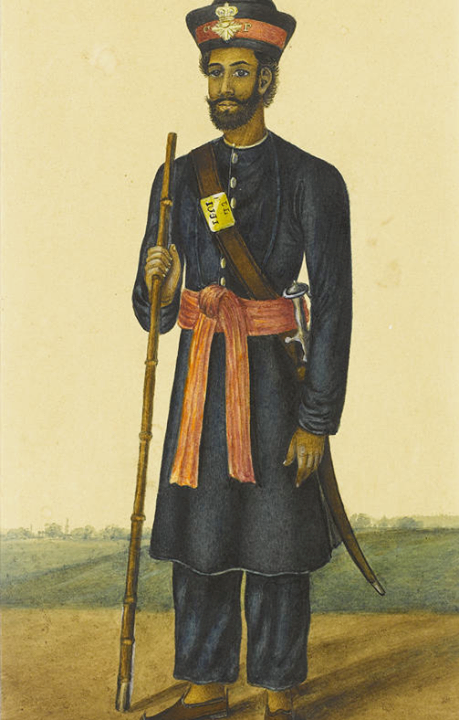
Staffs were used by police, night watchmen, guards. In general, until the second half of the 20th century, almost any man in Northern India had basic training in the possession of a staff. And he studied it as a boy.
Even in modern India in peacetime, this knowledge was not always theoretical. For example, in one of the Rajput villages of 600 inhabitants, three deaths were recorded as a result of staff fights for thirty years.
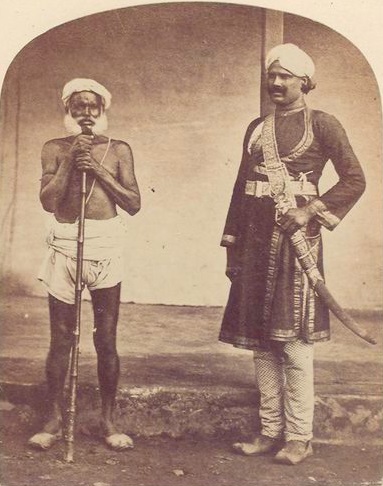
The classic image of «martial rajput», vanishing only in the 20th century: long whiskers, a high turban and heavy staff with iron rings.
Staffs were the main weapon of village militias. In every rural settlement throughout North India male agriculturalists were armed with metal-bound staves (as well as spears, bows, lances and muskets in the Mughal period). These were peasant warriors who were skilled and experienced in the use of such arms.
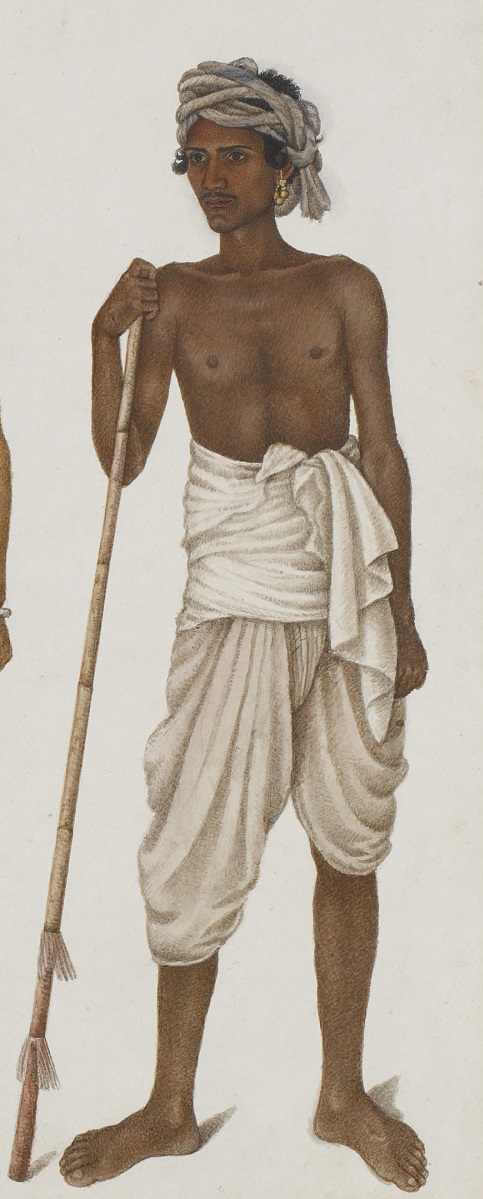
They were not soldiers, but they were militant — ready and willing to use their weapons and, if it came to that, to die using them. Village militias often engaged in violent disputes with neighboring communities over boundaries, cattle-theft or other provocations. They readily defended their villages against the depredations of bandits and armed raiders as well as foraging soldiers. They were the main fighting force of any rebellion.
The mass of evidence confirms that lakrayits were hired to collect taxes and as bodyguards, but most likely they were warrior-ascetics – such occupations were traditionally their prerogatives, as well as the constant wearing of a staff. For ascetics, the staff was not only a weapon and an invariable attribute of wanderings as a road accessory but also had an important semantic meaning. The training of ascetics with a weapon as its actual use earlier was one of the forms of practices of tapas, which later, in connection with the erosion of spiritual traditions in general, was replaced by the religious worship of Hanuman. So what was the meaning of the staff in the view of the ascetics?
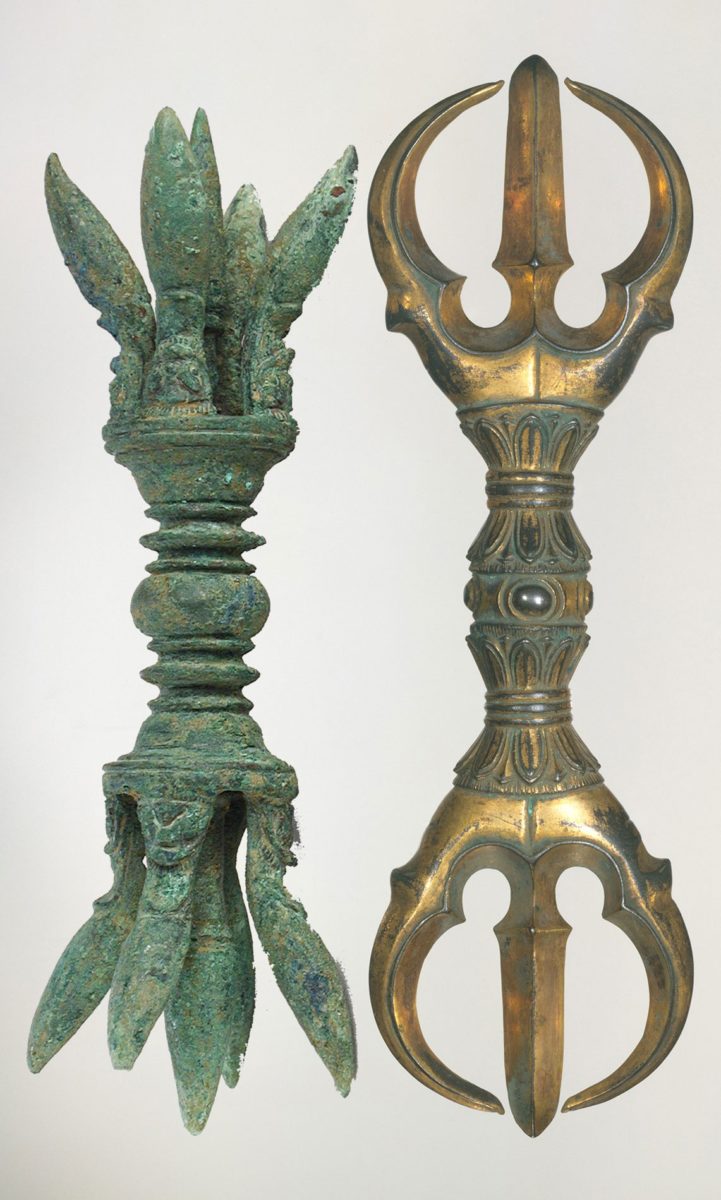
To answer this question it is need to appeal to the image of the vajra.
Usually, this term means ritual objects of Tibetan Buddhism. In a mythological
sense, the vajra was a weapon of Indra which he fought with, something like
lightning of the Greek Zeus.
In this regard, it is necessary to understand that the Vedas were closely
related to the nomadic and pastoral way of life of the Aryans so that the use
of abstract concepts for them is characterized to a much lesser extent than it
seems to the later interpreters and researchers. The language of the Vedas is
based on metaphors — comparisons, assimilation, impersonation.
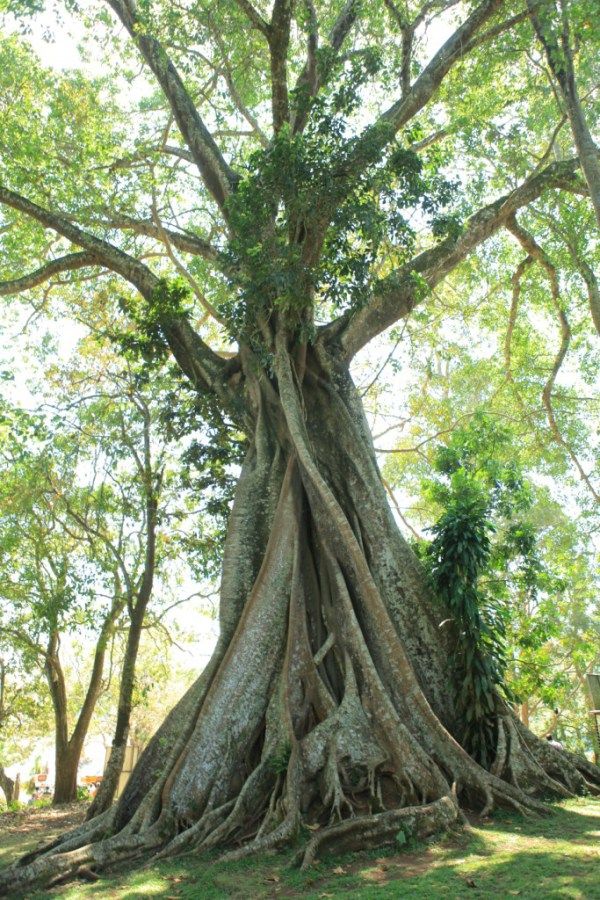
In this ritual space the vajra as a divine weapon comes closer to the image of the pillar, through which Indra divided the Sky and the Earth, which in turn is closely related to the concept of the Tree of life, or rather, two trees growing in different directions: celestial and earthly, branches up and down. According to some researchers, the artistic embodiment of the idea of vajra could refer to this image. After all, the function of vajra, on the one hand, includes the establishment of boundaries between different things, their distinction, and on the other — the assertion of the correct relationship between the selected parts, their connection.

Two oppositely directed efforts merge into a single process of creation and maintenance of the existing world order. It is clear that maintaining the harmony achieved requires an armed struggle against the forces of evil that are trying to break the established Law, and the vajra is also a weapon in this struggle. Indra’s cudgel, which he used to defeat Vritra, is the same vajra. In this regard, it seems fair to say that the prototype of the vajra and the basis of all related to this mythical item connotations was perhaps the very first weapon of ancient pastoralists – a cudgel made from the tree trunk with a butt and part of the roots.
Staff-lakri, meaning “a wood”, is made of a whole tree, from ancient times served for the preservation and protection of cattle — the basic of life, it defended from dangers in journey, in the eyes of dedicated it also personified the pillar holding the Heavens and the Earth and the magic weapon of Indra, removing obstacles and conquering enemies. The staff of ascetics not just was stopping aggression, but it was restoring the primordial equilibrium.
Protect me, staff
You who are my strength and my friend.
You are the bolt of Indra, slaying obstructions
Be my refuge and banish all that is evil
Upanishads






